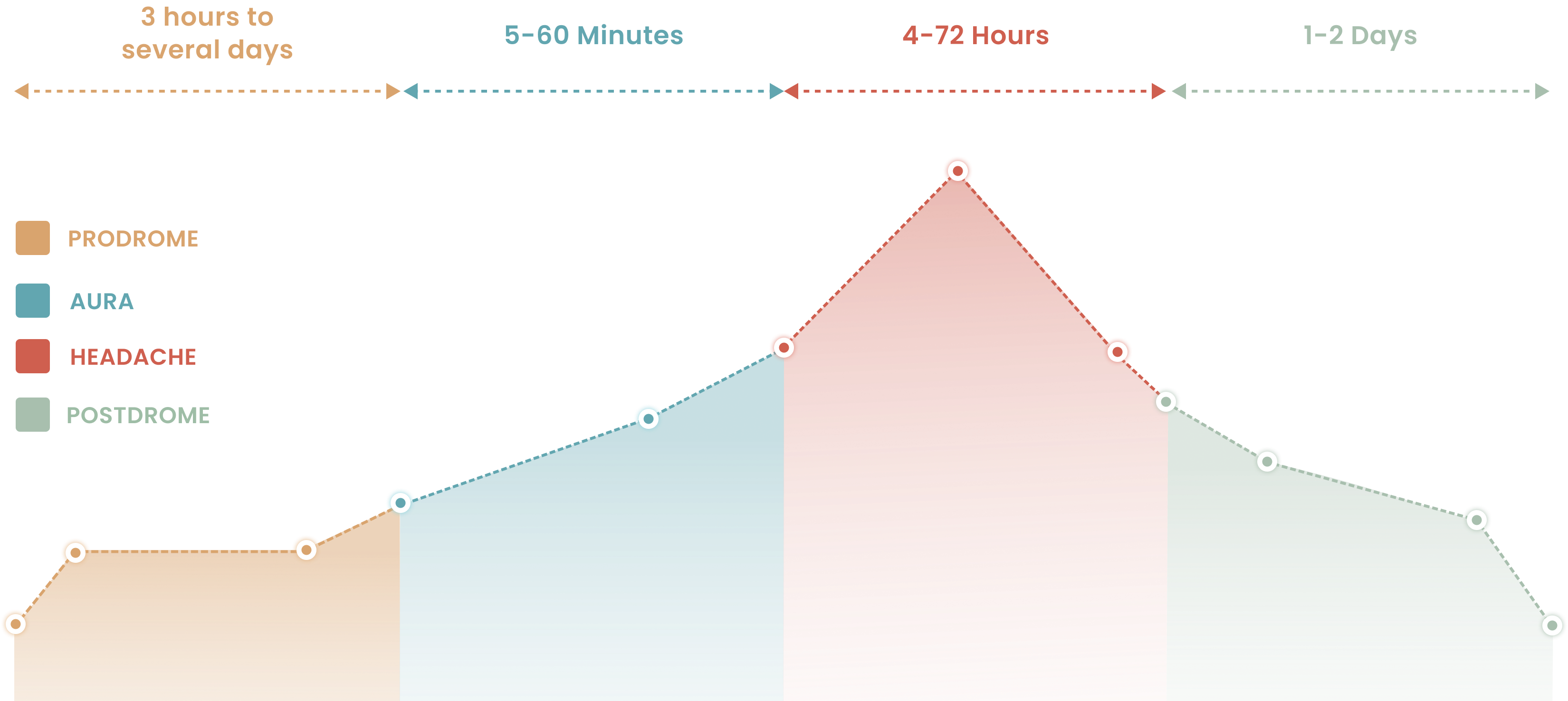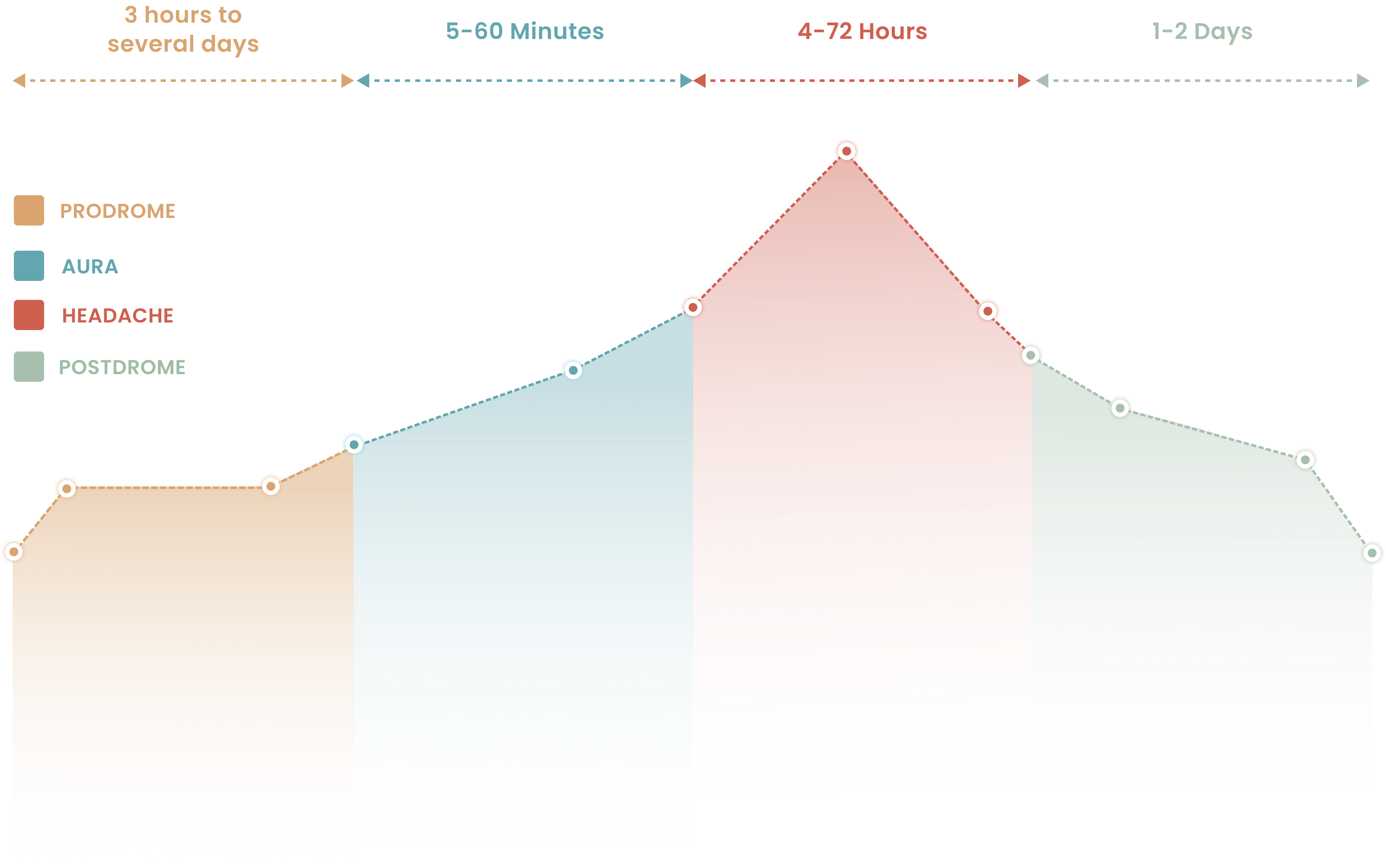
Migraines
With more than one billion people affected worldwide, migraines are a prevalent health issue and considered a leading cause of disability, impacting people’s work productivity, engagement with their family and overall quality of life.
Visit BMY
1 Billion
Affected by migraines worldwide.
2 nd
Leading cause of disability and disruption
3 Times
More likely in women than in men

Beyond Pain Relief: A Holistic Approach to Migraine Care
Speak to our SpecialistsMigraines can be extremely disruptive and debilitating. Not only does the person suffer from intense headaches but they also experience a range of other unsettling and intense symptoms. For many, the unpredictability of a migraine attack creates anxiety and adds to the feeling of helplessness and despair.
While there are various pharmaceutical medications to help provide relief from migraine symptoms, the perseverance of the condition is often chronic, progressively impacting overall health and wellbeing. There is also the issue of medication overuse, which is not uncommon and presents additional concerns related to pharmaceutical side effects.
Experts in the medical field have delineated 4 phases of a migraine. Each person’s experience of each phase may differ, and some stages of the process are more subtle than others, with the pain of the headache phase being the obvious one, but it is useful to see it as a process that peaks and subsides, while becoming more aware of the distinctive aspects of each part.

 SEVERITY
SEVERITYProdrome
This early stage, sometimes referred to as the “pre-headache”, can last a few hours up to a couple of days.
Common symptoms in this phase include:
- Concentration difficulties
- Irritability
- Depression
- Difficulty speaking and reading
- Sleep disturbance
- Nausea
- Fatigue
- Sensitivity to light and sound
- Muscle stiffness
Aura
This second phase does not happen for all people. Some experience the aura as happening at the same time as third phase – the headache.
Common symptoms in this phase include:
- Seeing sparkles of flashing dots or circles
- Blind spots
- Feeling tingling sensations or numbness
- Ringing in the ears (Tinnitus)
- Changes in smell or taste
Headache
The headache phase is the most uncomfortable phase of the migraine, with pain that can often be debilitating. It can last anywhere from 4 hours up to 72 hours. It typically begins on one side of the head and it can spread to the other side or remain one-sided.
Common symptoms in this phase include:
- Nausea and vomiting
- Abdominal pain
- Sweating or chills
- Pallor (pail skin)
- Dizziness
- Blurred vision
Postdrome
Also known as the migraine “hangover”, this phase is reported in about 80% of people who experience migraines. It can last a day or two day
Common symptoms in this phase include:
- Difficulty concentrating
- Difficulty understanding things
- Fatigue
- Feeling depressed
- Paradoxically, feeling relief to the degree of euphoria

Holistic Alternative Approaches For Migraine Treatment
For most people, migraine is a chronic condition that impacts their ability to thrive and enjoy their life. Pharmaceutical medication is both a thankful relief during an attack and also a concern as their continuous use does present medical side effect.
At bmy, we believe in presenting holistic, alternative natural approaches to treat chronic debilitating conditions such as migraines. Our aim is to provide treatments that address different aspects of the condition to change the pattern of the illness and promote a greater sense of health and wellbeing.

Medication overuse is a major health problem.
Homeopathic Treatment for Migraine
Consult with our HomeopathHomeopathy approaches migraine treatment by individualizing the remedies for the different stages of the treatment journey, customizing the doses according to each individual’s experience. Adjusting the remedy qualities and quantities in accompaniment with the changes in the symptoms makes the homeopathic approach both safe and specific. It not only treats the symptoms but also gradually achieves the desired change in the migraine pattern itself so that it no longer recurs or recurs with significantly less intensity.
A study that followed the participants over a 2-year period found the significant effect and long-lasting effect of homeopathic treatment to happen within 3 months and the impact to continue over the course of the 2 years of the study. Treatment resulted in significant reduction in headache severity and frequency, as well as significant reduction in the accompanying symptoms pre and post the headache phase.
As participants were experiencing relief and benefit through the naturalistic remedies offered by homeopathy, the study also found marked decrease in the use of conventional medication.
Up to 80% of patients with migraine report neck pain to some extent during the migraine cycle.
Holistic Physiotherapy for Migraines
Consult With Our Holistic PhysiotherapistWhen we think holistically, we consider the different ways that a condition progresses and the impact it has on different parts of the body and on mental health as well. Muscle stiffness is common especially at the prodrome phase, and so is depression. On the physical aspect, “up to 80% of patients with migraine report neck pain to some extent during the migraine cycle” (Carvalho, Schwartz et. Al., 2020).
Bringing alleviation to the body can bring an important shift in wellness. Working with a holistic physiotherapist can temper the intensity of physical pain caused by migraine. Studies have found that craniosacral therapy in particular helps bring significant relief by its gentle and minimally invasive intervention, offering release and reducing the severity, frequency, and level of pain that migraines can cause.
Emotional stress is one of the most common triggers of migraine headaches.
Holistic Psychotherapy for Migraines
Consult with Our Holistic PsychotherapistThe intention of a holistic approach to treating chronic conditions is to improve overall immunity and cultivate a kind of healthy resilience so that a disease or symptom’s disturbing effect does not take over the quality of a person’s life. When overall wellbeing is improved, symptoms are more manageable and less overwhelming.
When it comes to migraines, it is widely recognized that “emotional stress is one of the most common triggers of migraine headaches” (Professional, n.d., Cleveland Clinic).
Anxiety and depression are also some of the most common mental health issues for people with migraines. At bmy, help is available to address these aspects too, with the expertise of a holistic psychotherapist. In addition to reducing the severity of anxiety and depression, a holistic psychotherapist uses mindfulness treatment modalities - such as Somatic Experiencing - to increase the resilience to stress and increase the internal capacity for emotion regulation. This allows for to overall self-improvement and greater sense of wellbeing.
With more than one billion people affected worldwide, migraines are a prevalent health issue and considered a leading cause of disability, impacting people’s work productivity, engagement with their family and overall quality of life. Reports show that women are 3 times more likely to have migraines than are men.
 16623578cad46c.svg)


